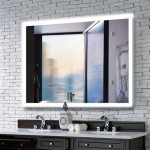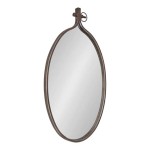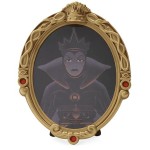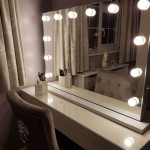What Image Is Produced By A Convex Mirror In Any Location
Convex mirrors, characterized by their outwardly curved reflecting surface, offer a unique perspective on the world. Unlike concave mirrors, which can produce both real and virtual images depending on the object's position, convex mirrors consistently produce virtual, diminished, and upright images regardless of the object's location. This consistent behavior makes them valuable tools in various applications, from security monitoring to automotive design.
Understanding the image formation process in convex mirrors requires a grasp of a few key optical principles. Light rays emanating from an object diverge upon striking the curved surface of the mirror. These diverging rays, when extended backward (behind the mirror), appear to converge at a point. This point of apparent convergence is where the virtual image is formed. Because the light rays do not physically converge, the image cannot be projected onto a screen and is therefore termed "virtual."
The diminished size of the image is a direct consequence of the diverging nature of the reflected rays. Since the reflected rays spread outwards, the virtual image appears smaller than the actual object. This reduction in size is independent of the object's distance from the mirror, though the degree of diminishment varies slightly. Objects closer to the mirror will produce slightly larger virtual images compared to objects farther away.
The upright orientation of the image is another characteristic feature of convex mirror reflections. Unlike concave mirrors, which can invert the image under certain conditions, convex mirrors maintain the object's vertical orientation in the virtual image. This property is particularly useful in applications where maintaining the correct orientation is crucial.
The location of the virtual image formed by a convex mirror always lies behind the mirror's surface. This is a consequence of the virtual nature of the image. Since the light rays do not actually converge behind the mirror, the image is considered to reside within the virtual space behind the reflecting surface. The specific distance of the image behind the mirror depends on the object's distance and the mirror's curvature. As the object moves closer to the mirror, the virtual image also moves closer to the mirror's surface, though it always remains behind it.
The curvature of the mirror, often expressed as its radius of curvature, plays a significant role in determining the image characteristics. A mirror with a smaller radius of curvature, meaning a more strongly curved surface, will produce a smaller virtual image located closer to the mirror's surface compared to a mirror with a larger radius of curvature. This relationship between curvature and image properties is crucial in designing convex mirrors for specific applications.
The field of view offered by a convex mirror is another essential characteristic. The diverging nature of the reflected rays allows convex mirrors to capture a wider field of view compared to plane or concave mirrors. This wider perspective makes them ideal for applications such as security mirrors in stores or rearview mirrors in vehicles, where a broader view of the surroundings is essential for safety and surveillance.
In automotive applications, the use of convex mirrors as passenger-side rearview mirrors enhances driver awareness. The wider field of view reduces blind spots and provides a more comprehensive view of the traffic alongside the vehicle. However, the diminished size of the image also leads to objects appearing farther away than they actually are. This characteristic requires drivers to adjust their perception and understand that objects viewed in the convex mirror are closer than they seem.
Security mirrors, frequently employed in retail environments and other public spaces, leverage the wide field of view provided by convex mirrors to monitor a large area with a single mirror. This allows security personnel to observe a broader area, enhancing surveillance capabilities and deterring theft. The diminished size of the images, while making individual identification more challenging, allows for a wider perspective of the overall scene.
The consistent production of virtual, diminished, and upright images, regardless of object location, makes convex mirrors a valuable tool in various optical applications. Their ability to provide a wider field of view contributes to enhanced safety and security in diverse settings. From driving to surveillance, the unique properties of convex mirrors contribute significantly to our visual understanding of the world around us.

Convex Mirror Image Formation Conditions Ray Diagram Uses

Image Formation By Convex Mirrors
Is It Possible For A Convex Mirror To Produce Real Image When The Object Virtual Quora
Can A Convex Mirror Produce Real Image

Image Formation By Convex Mirrors

Convex Mirror Image Formation Conditions Ray Diagram Uses

Question Recalling Whether The Image Produced By A Convex Mirror Can Be Inverted Nagwa
Can A Convex Mirror Form Magnified Image Quora

Convex Mirror Image Formation Conditions Ray Diagram Uses

Show That All Images Formed By A Convex Mirror Is Virtual Physics Ray Optics And Optical Instruments 9856423 Meritnation Com








